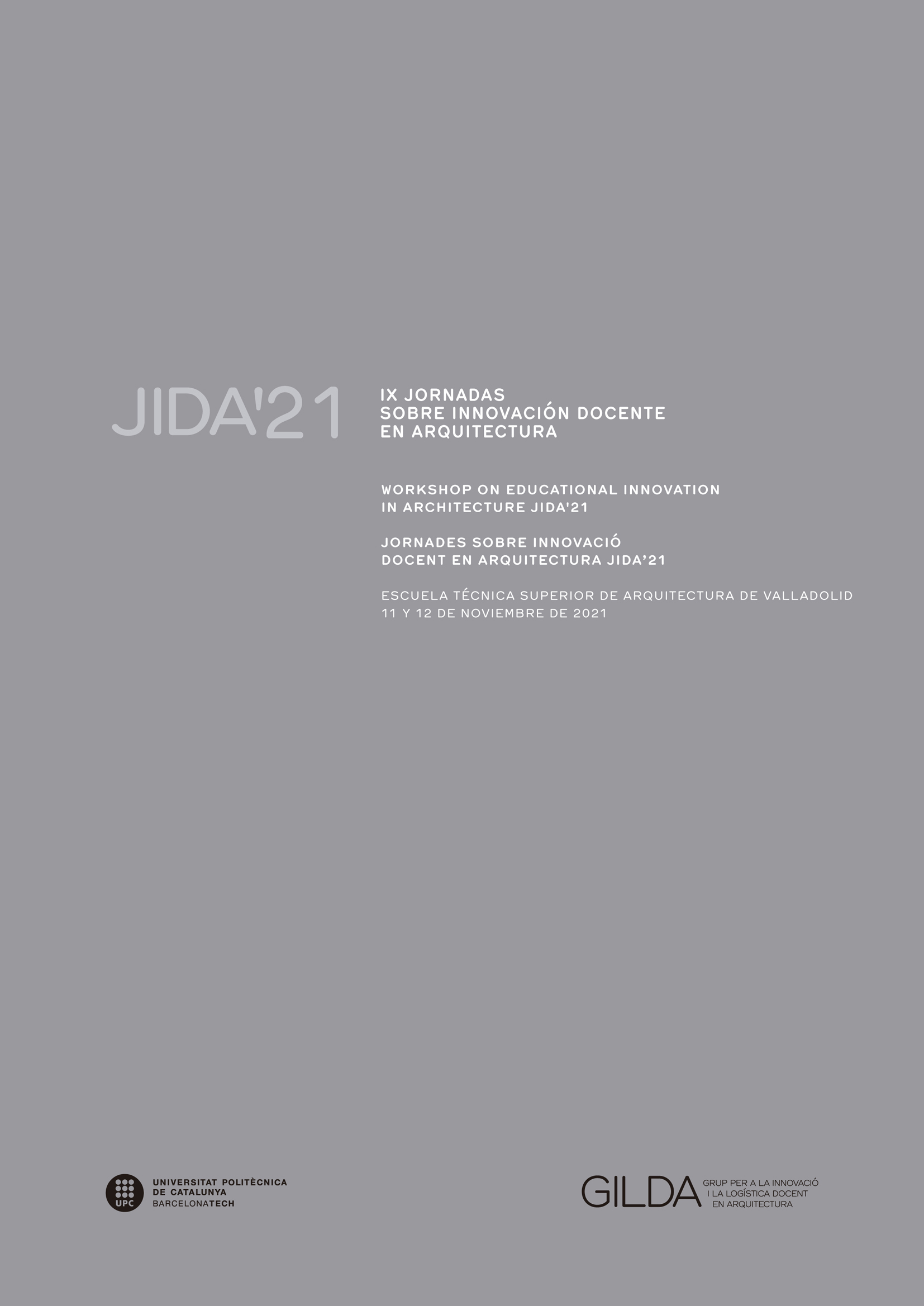New teaching challenges in geometry through basketry
DOI:
https://doi.org/10.5821/jida.2021.10550Keywords:
geometry, interwoven architecture, basketry, 3D models, building with your handsAbstract
At the HTSA of the UPV/EHU, Geometry subjects continue to evolve in the study and control of geometric shapes. Starting from the basic forms, it delves into complex forms, linked to Architecture. Nowadays, this teaching method is developed by linking the study of geometric shapes with the making of models inspired by traditional basketry. Using 3D modeling software such as Rhinoceros and the visual programming language Grasshopper, which acts as a plug-in within the former, allows students to explore never-before-made patterns and shapes. After obtaining digital models that transcend the techniques and forms used in traditional basket weaving, physical models are made by hand. It has been found that by making these models with their hands, students develop important skills for the labor market while completing the learning in geometric shapes.
References
ADOVASIO, J.M. (2021). “Fifty years with baskets”. North American Archaeologist, 42(2), p.119-139.
AMOROS, X. (1998). La cesteria del castaño en Duralgaldea. Juan Unzueta. Arbaso, Durango, Bizkaia.
BUNN, S. (2020). “Basket-work, well-being and recovery: the story from Scotland”. Craft Research,11, p. 39-56.
EZQUERRA, A.S. y GORBEA, M.J.T. (1995). “Caserío Igartubeiti (Ezkio-Itsaso)”. Arkeoikuska: Investigación arqueológica, p. 460-468.
FERNÁNDEZ, Á.T. (1983a). Geometria Descriptiva T1. Editorial Tebar, Madrid.
FERNÁNDEZ, Á.T. (1983b). Geometria Descriptiva T2. Editorial Tebar, Madrid.
GAILIUNAS, P. (2011). A Mad Weave Tetrahedron. Bridges Coimbra Proc., Tessellations Publishing, Phoenix, 39-44.
HARNOMO, F. I. e INDRAPRASTHA, A. (2016). “Computational Weaving Grammar of Traditional Woven Pattern”. En Parametricism Vs. Materialism: Evolution of Digital Technologies for Development, in 8th ASCAAD Conference Proceedings, London, 75-84.
IZQUIERDO, F. (1997a). Geometría descriptiva superior y aplicada. Editor: Izquierdo Ruiz de la Peña, FJ, Madrid, 1996.
IZQUIERDO, F. (1997b). Geometría descriptiva. Editor: Izquierdo Ruiz de la Peña, FJ, Madrid, 1997.
KVAVADZE, E et al. (2009). “30,000-year-old wild flax fibers”. Science, 325 (5946), p. 1359-1359.
MALLOW, J. M. (1996). Pine Needle Basketry: From Forest Floor to Finished Project. Lark Books, N.C.
MARTIN, A. G. (2015). “A basketmaker’s approach to structural morphology”. En Proceedings of IASS Annual Symposia, International Association for Shell and Spatial Structures (IASS), 29, 1-8.
MUSLIMIN, R. (2010). Learning from weaving for digital fabrication in architecture. Leonardo, 43(4), 340-349.
PALLASMAA, J. (2020). Animales arquitectos. Gustavo Gili, Barcelona.
QUESADA, C. et al. (1996). “La cestería decorada de la Cueva de los Murciélagos (Albuñol, Granada)”. Complutum, 6, p. 105-122.
ROMERO, S.; HUERTA, R. y HERRERO, M. (2021). “The basketry at the early Neolithic site of La Draga (Banyoles, Spain)”. Journal of Archaeological Science: Reports, 35, 102692.
SUDDUTH, B. R. (1999). Baskets: a book for makers and collectors. Hand Books Press, Gloucester.
TARNAI, T. et al. (2012). “Wrapping the cube and other polyhedral”. En Proceedings of the Royal Society A: Mathematical, Physical and Engineering Sciences, 468(2145), 2652-2666.
ZORAN, A. (2013). “Hybrid basketry: interweaving digital practice within contemporary craft”. En ACM SIGGRAPH 2013 Art Gallery, 324-331.






















